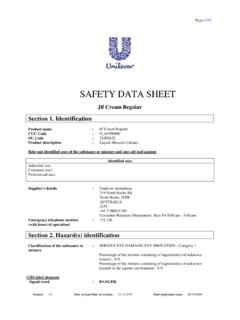Transcription of Burns: Percentage and Degree Reference - Michigan Burn
1 Burns: Percentage and Degree Reference Chemical Burns: Hydrofluoric acid burns should be treated with calcium gluconate. burn Injuries: Frequently Asked Questions 1. How long does it take for the burn to declare itself? Once the burn has occurred it takes up to 48-72 hours for the burning process to complete itself. After 72 hours, the burn is at its full potential and treatment options can be decided. 2. What should I do about all of the blisters? Not all blisters should be removed. Small blisters that do not look like they are going to spontaneously erupt should be left on for a biological covering. Large blisters that are fluid filled should be removed completely. If the blister is on the soles of the feet or the palm of the hand and is not impeding mobility or functionality they should be left in place unless a burn physician has asked for removal.
2 3. Should the patient continue to move the affected area? Range of motion and movement is a priority for burn patients. Ambulating improves both cardiac and pulmonary function; as well as decreasing the risk of deep vein thrombosis, contractures and complications. Range of motion exercises should be completed on all body areas to prevent joint tightness/stiffness, contractures and increase function post injury. 4. What type of diet should the patient have? Patients with burn injury have an increased metabolic rate, due to this, the patient will require an increase in calorie and protein intake. Patients should be on a high calorie/high protein diet. Considerations should be made for patient co-morbidities and calorie counts should be recorded on any patient taking an oral diet. If calorie counts are inadequate or the patient is unable to manage oral intake then considerations should be made towards inserting a feeding tube and add nutritional supplements.
3 5. Why does is hurt so much? Burns are an extremely painful injury since with a superficial or partial thickness burs the nerve endings are disrupted. Pain is a sign that indicates the burn is not full thickness and should possibly heal without surgical intervention. 6. What type of dressing is available? Dressing types are determined by the % of burn present, pain tolerance to wound care and type of injury. It may be a long acting silver based dressing or a cream/ointment applied daily. 7. How often should the dressing be changed? The dressings chosen for the mass casualty plan are Acticoat which can remain in place for up to 5 days and Silvadene which must be changed at least daily if not twice a day. Please refer to specific dressing instructions on the website. 8. Should you remove all of the loose skin prior to dressing?
4 Yes all of the loose skin should be removed. This is usually managed by the washing of the wound with soap and water using a washcloth. 9. Why does the burned area need to be shaved daily? All affected area should be shaved and a one inch border surrounding the wound to prevent infection. Hair harbors bacteria and can increase the infection risk. Shaving should be completed during the initial debridement and each dressing change as the hair grows back. 10. What do I need to do for the healed skin? Once the affected area has healed it should be moisturized daily and whenever the skin begins to dry. This will relieve the itching that occurs during the healing process. Use unscented, dye free lotions, we use a lot of Cocoa Butter. Remember that newly healed burn skin is fragile and is therefore subject to injury more easily including sunburn and frostbite.
5 Be protective of your new skin.



